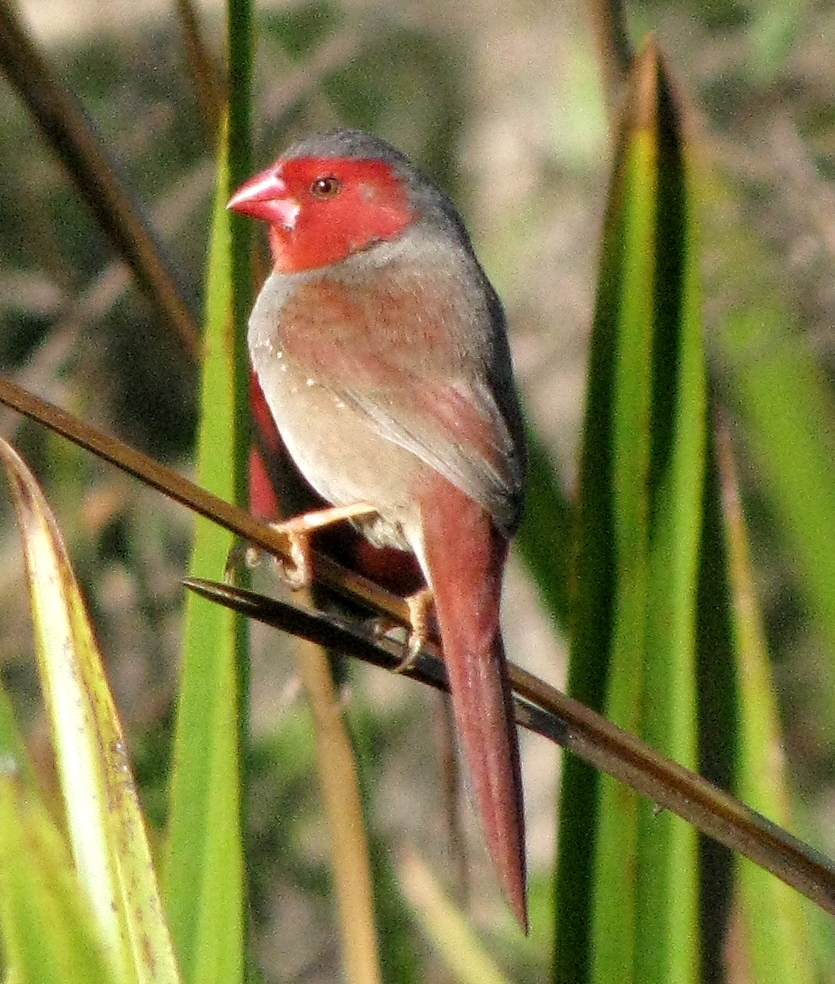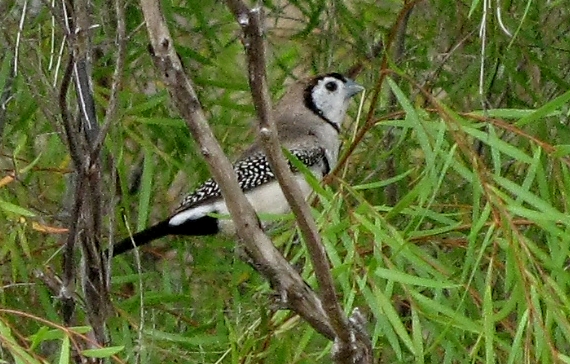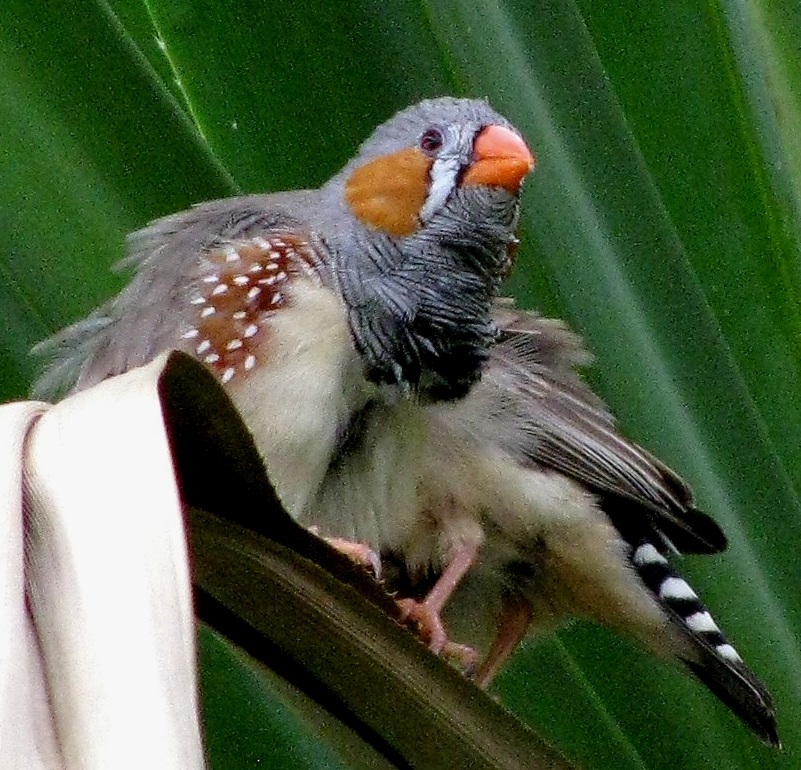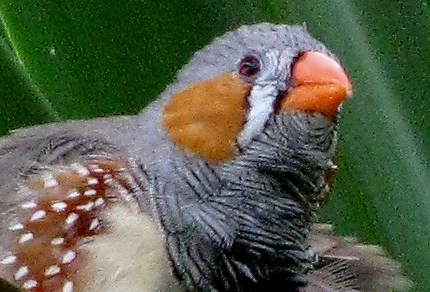This morning, the Ross River lay like satin painted in shades of sky and trees, its surface faintly rippled by gentle breeze and the movements of water birds – magpie geese, Pacific black ducks, egrets. On shore, a male anhinga rested with wings hung like a black cloak. Near it, a black duck basked in sunshine, the iridescent speculum on its wing green fire lit by the sun.
This river, which is a defining feature of Townsville and the core of my local excursions, led me a dozen kilometres along its banks, half on one side and half on the other. I set out with no agenda, no plan, only to follow the river. In doing so, I observed 46 species of birds, more than a fifth of my Australian tally to date and a testament to the importance of the Ross River and its shoreline parkway as habitat for wildlife. The species ranged from tiny crimson finches to ponderous pelicans, from nectarivorous scaly-breasted lorikeets to a raptorial Nankeen kestrel. Comb-crested jacanas walked on lily pads, brown-backed honeyeaters foraged in riverside paperbarks, and rainbow bee-eaters – more than I’ve ever before seen on one outing – soared into the sky in pursuit of insects, perched in countless trees, and rested like swatches torn from an exquisite silk scarf and tossed over the parkway lawns.

Female Crimson Finch (© Vilis Nams)
The crimson finches were my most exciting find. I’d been told by members of the Townsville birding club that the species had nested on Baza Island a few years ago, but until today had only observed crimson finches at Ingham’s Tyto Wetlands. However, this morning I spotted two females on the island, to which I’d scrambled in search of an elusive vocalization.
The crimson finch is one of 18 species of native Australian grassfinches, all members of the avian subfamily Estrildinae, all small, and all tending to occur in flocks.1 So far, I’ve observed five of these species – crimson, double-barred, red-browed, and zebra finches, plus the chestnut-breasted mannikin. The nutmeg mannikin, which I see far more frequently than the other species in the Townsville area, is actually a south Asian species introduced to Australia via escapes from aviaries.2 Although most of the Australian native grassfinches are commonly found within their ranges, the black-throated, star, and Gouldian finches are rare or endangered due to habitat destruction or trapping for the aviary market.1 A trip to the pet store and look in the bird cages will acquaint you with a variety of colourful finches, a number of which, like the popular zebra finch, are grassfinches native to Australia.

Double-barred Finch carrying Nest Material (© Magi Nams)
The Australian grassfinches are an eclectic lot insofar as colouring goes. The mannikins and several of the finches bear subdued plumages that incorporate shades of brown, grey, and black. At the opposite end of the spectrum are the Gouldian finch and blue-headed parrot-finch, which bear brilliant green plumages highlighted with blue, red, yellow, black, or purple. The four species of firetails possess scarlet rumps and bold, black-and-white patterns on their bellies, while the double-barred finch, with its white, black-circled mask, always reminds me of an actor’s face painted to perform a pantomime. Male crimson finches look as though they’ve been dunked in raspberry juice (the females less so), while red-browed and star finches sport rumps and head patches of red. The zebra finch acquired its name from the black and white stripes on its cheeks and tail, and the plum-headed finch from – you guessed it – its purple forehead, and in the case of the male, chin as well.1

Zebra Finches (© Magi Nams)
While on the topic of finches, I must mention an intriguing scientific tidbit I read recently concerning vocalizations of zebra finches. American researchers at the University of Utah discovered that, while female zebra finches produce only low-pitch sounds, male zebra finches routinely pump out vocalizations spanning the top four octaves of a piano, which is essentially half of all the notes (the highest ones) you can play on a piano. Apparently, these oscine (songbird) acrobats can do this because they possess extremely strong muscles in their syrinx, the avian equivalent of a voicebox.3 The next time I hear zebra finches singing, I’ll listen more carefully.
Today’s birds: peaceful doves, rainbow lorikeets, figbirds, rainbow bee-eaters, brush cuckoo, mynas, magpie-larks, Australian magpies, masked lapwings, rock doves, great bowerbirds, brown honeyeaters, nutmeg mannikins, welcome swallows, Australian white ibises, Australian pelicans, spangled drongoes, intermediate egrets, white-faced heron, comb-crested jacanas, royal spoonbills, anhingas, little pied cormorants, pheasant coucals, white-bellied cuckoo-shrike, yellow honeyeaters, great egret, magpie geese, Pacific black ducks, brown-backed honeyeaters, helmeted friarbird, white-throated honeyeater, little egret, white-gaped honeyeaters, little black cormorant, scaly-breasted lorikeets, crimson finches, olive-backed oriole, little shrike-thrush, leaden flycatcher, collared sparrowhawk, Nankeen kestrel, house sparrows, straw-necked ibis, blue-faced honeyeater, laughing kookaburra.
References:
1. Graham Pizzey and Frank Knight. The Field Guide to the Birds of Australia. 1997. Angus & Robertson, Sydney, pp. 488-496, 545; 2. Ibid, p. 494.
3. Townsville Bulletin. Singing lesson from a male zebra finch. Saturday, July 10, 2010, p. 68.


